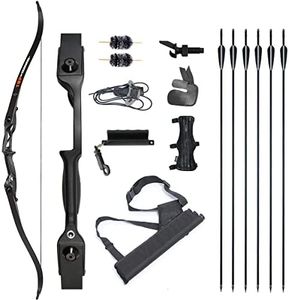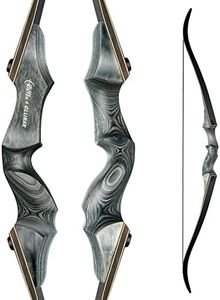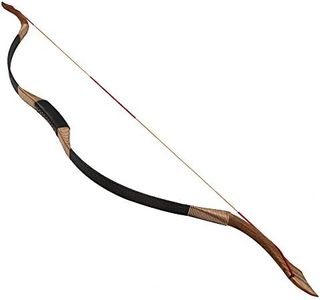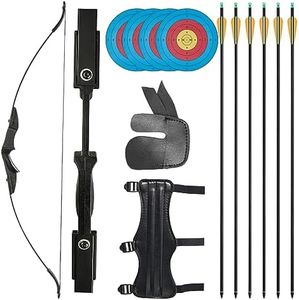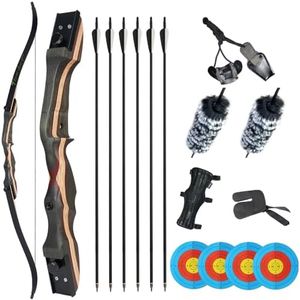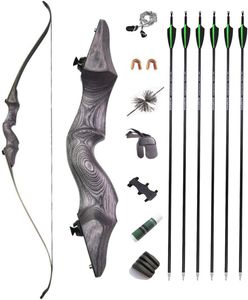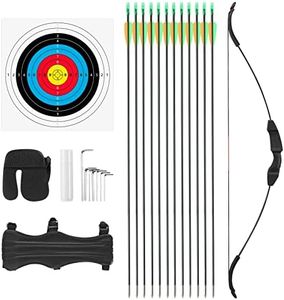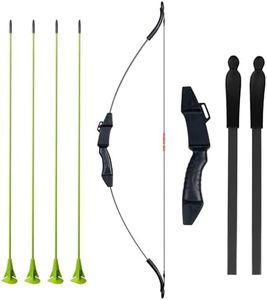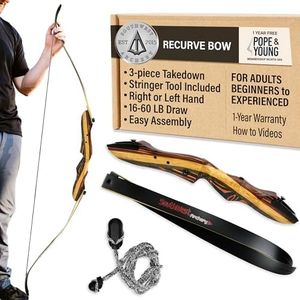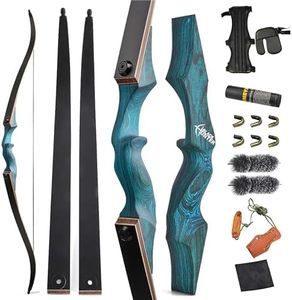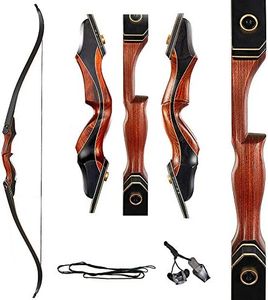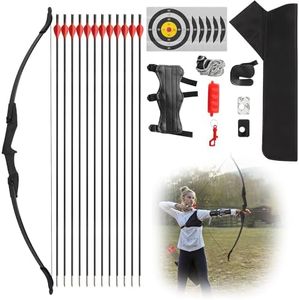We Use CookiesWe use cookies to enhance the security, performance,
functionality and for analytical and promotional activities. By continuing to browse this site you
are agreeing to our privacy policy
10 Best Recurve Bows
From leading brands and best sellers available on the web.Buying Guide for the Best Recurve Bows
Choosing a recurve bow is an exciting process whether you're interested in target archery, field archery, or even traditional bowhunting. The fit and function need to match your goals, physical build, and experience level. Rather than looking for the 'best' bow overall, focus on what's best for your needs, comfort, and intended use. Learning the basics of bow specs can help you make a choice that supports your skill development and shooting enjoyment.Draw WeightDraw weight is the amount of force, measured in pounds, needed to pull the bowstring back fully. This is important because it affects how powerful your shot is and how fatiguing it will be to use the bow over longer sessions. Lighter draw weights (15-25 lbs) are good for beginners and youth, making it easy to learn proper form without strain. Medium draw weights (25-40 lbs) suit most adult beginners or those interested in target archery, providing a good balance of power and manageability. Higher draw weights (40 lbs and up) are generally chosen by experienced archers or those hunting larger game, as more power is needed for effective penetration. Consider your physical strength and what kind of shooting you'll do most when choosing draw weight.
Bow LengthBow length is usually measured from one tip of the bow to the other along the curve. The right length makes the bow more accurate and comfortable for you to shoot. Shorter bows (48-62 inches) are easier to maneuver, which might help in forested areas or for youth. Standard or longer bows (62-70 inches) are more stable and forgiving, favored by target shooters for their smoothness and accuracy. Match the length to your draw length and the type of archery you plan to do—longer bows excel at target archery, while shorter ones suit tight spaces or younger users.
Riser MaterialThe riser is the center part of the bow where you hold it. Risers can be made from wood, metal (often aluminum or magnesium alloys), or synthetic composites. Wooden risers offer a classic look and feel, often preferred by traditional archers. Metal risers are popular in modern recurve bows thanks to their strength, consistency, and comfort features like better grip shapes or mounts for accessories. Composite risers aim for a balance of both. Think about whether you want tradition or modern features, as well as comfort in your hand and weight of the bow.
LimbsLimbs are the flexible parts at either end that give the bow its power and feel. Some bows have fixed limbs, while others use takedown limbs that can be removed for transport or replaced with different strengths. Limbs are usually made from wood, fiberglass, carbon, or a mix. Beginners often like takedown bows because you can upgrade limbs as your strength or needs change. The limb material affects how smooth and efficient the shot feels, so picking a bow that allows limb swaps gives you flexibility as you improve.
Brace HeightBrace height is the distance between the string and the deepest part of the grip when the bow is strung. This matters because higher brace heights tend to make the bow more forgiving (less sensitive to shooting form), while lower brace heights might offer a bit more speed but can be less forgiving. New archers usually benefit from a moderate to high brace height for ease of use. This spec will usually be set by the bow design, but make sure it fits within the recommended range for consistent performance.
Hand OrientationBows are made for either right-handed or left-handed shooters. A right-handed archer holds the bow in their left hand and pulls the string with their right hand, and vice versa for a left-handed archer. This is important to get right for comfort and accuracy. Always choose a bow that matches your dominant hand or eye.
